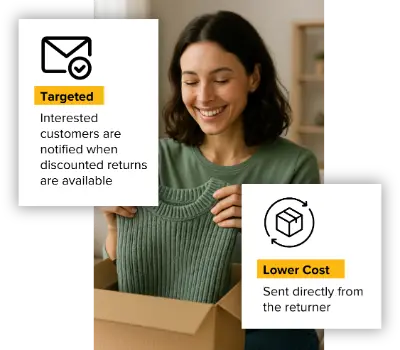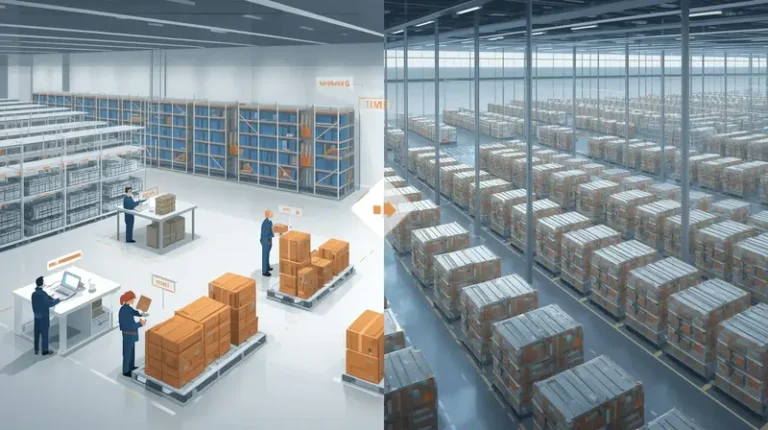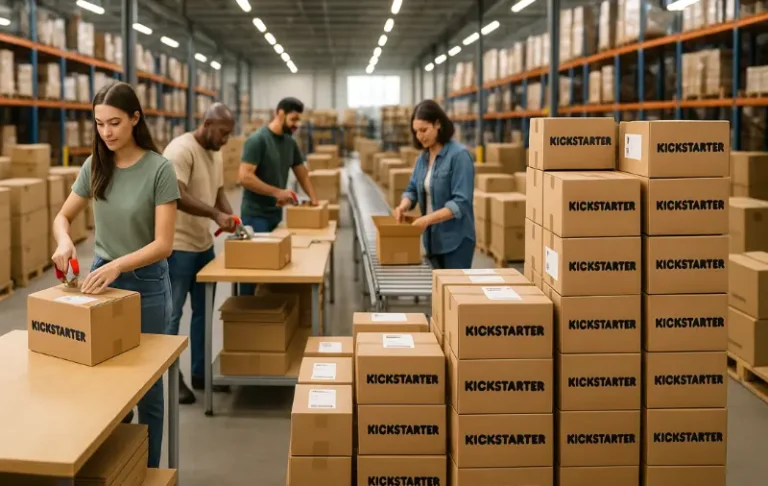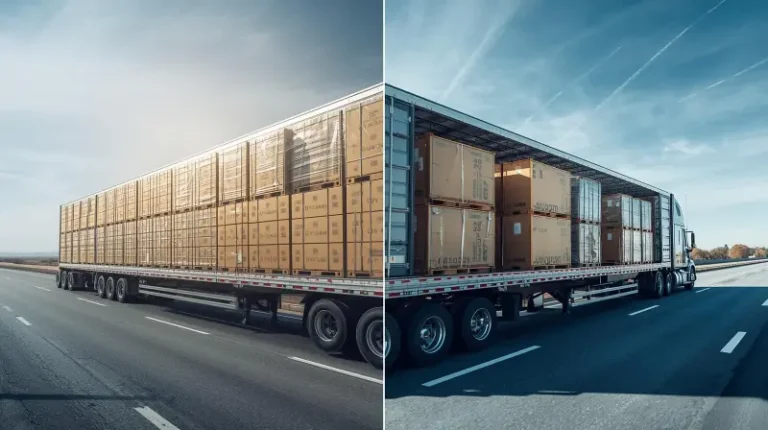Single-Location 3PL Service Providers Are Dead

Last updated on July 23, 2025
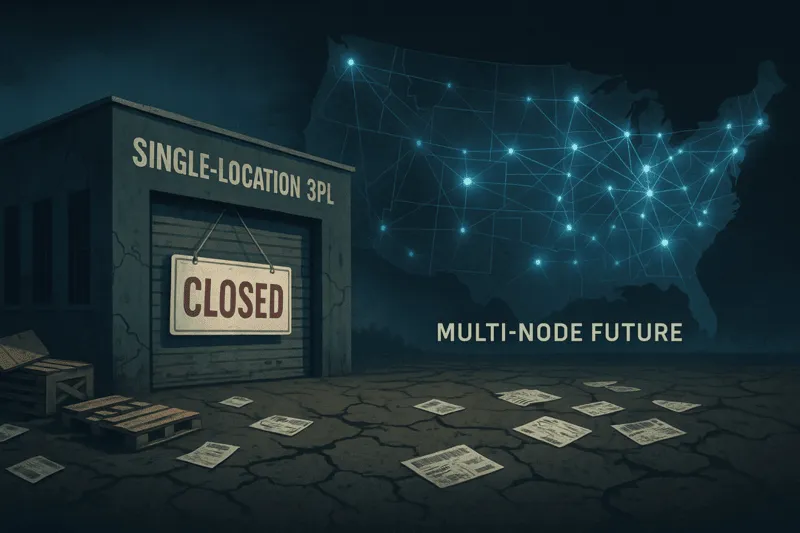
In this article
 9 minutes
9 minutes
- The False Promise of Simplicity: An Unforgiving Supply Chain Reality
- Reverse Logistics and Returns Management Woes
- Machine Learning and Advanced Technology Are Game Changers
- The Cost of Ignoring the Multi-Location Advantage
- "But Isn't One Location Easier?" Nope. It’s Dangerous.
- Brands Need Tailored Solutions, Not One-Size-Fits-All
- The Brand Death Spiral: A 3-Year Lifecycle of Regret
- Bold Prediction: The End of Single-Location 3PLs
- Why Cahoot Was Built for This Future
- Bottom Line: Adapt or Fade Away
- Frequently Asked Questions
Here’s an unpopular opinion for ecommerce professionals and logistics experts: single-location 3PL service providers are officially obsolete. Yes, dead, done, over. Like MySpace and dial-up internet. If your brand still uses a third-party logistics company that operates from just one warehouse, you’re not just “behind the curve.” You’re actively lighting your margin on fire. Let’s walk through the realities that no one talks about, but everyone feels.
The False Promise of Simplicity: An Unforgiving Supply Chain Reality
At face value, single-location warehousing services seem harmless enough. They promise simplicity, one point of contact, straightforward inventory management, and easy oversight of logistics operations. But beneath this veneer of simplicity lies a costly nightmare that impacts your transportation management, shipping process, and ultimately, your brand reputation.
Think shipping zones don’t matter much? Think again. This kind of setup assumes your customers all live within a few hundred miles of your warehouse. But they don’t. Shipping costs explode exponentially as delivery distances stretch across multiple zones. A single-location warehouse in North Dakota, for instance, might seem like a cost-effective transportation hub until you’re shipping to Florida, Texas, or California. Suddenly, those competitive rates vanish, leaving you holding a massive freight bill.
Real example: Everlane, the popular consumer goods brand known for transparency, learned this the hard way. When their primary 3PL provider operated out of a single West Coast facility, they faced increased logistics costs shipping to customers in the Eastern U.S., ultimately hitting their bottom line. Lesson learned: multi-location logistics services aren’t optional; they’re essential.
Slash Your Fulfillment Costs by Up to 30%
Cut shipping expenses by 30% and boost profit with Cahoot's AI-optimized fulfillment services and modern tech —no overheads and no humans required!
I'm Interested in Saving Time and MoneyReverse Logistics and Returns Management Woes
Single-location providers also magnify reverse logistics challenges. Returns management isn’t just about getting products back on shelves; it’s about speed and efficiency. Imagine you’re a New York customer sending returns to a facility based in California. That slow, cumbersome shipping process not only irritates customers but also inflates your costs.
By contrast, comprehensive services from multi-location providers enable efficient deliveries and quick turnarounds on returns. Brands like Zappos have excelled precisely because their reverse logistics and inventory management processes are supported by strategically placed distribution services across North America.
Machine Learning and Advanced Technology Are Game Changers
Here’s another one: advanced technology and artificial intelligence are transforming logistics. Multi-location 3PL providers are adopting sophisticated machine learning tools and real-time tracking to enhance efficiency, something a single-location operator struggles to replicate.
That gap gets wider every year. Take Uber Freight, for example, leveraging data points and AI-driven transportation management systems to optimize routes, manage inventory, and predict logistics bottlenecks. Single-location warehouses? They’re largely stuck still using spreadsheets. Still calling carriers to schedule pickups. Still guessing. If your provider isn’t riding that wave, you’re drowning.
The Cost of Ignoring the Multi-Location Advantage
Let’s make this concrete with some hypothetical (yet highly realistic) numbers. Suppose your ecommerce fulfillment provider operates solely from a warehouse in Philadelphia, fulfilling orders nationwide. You might pay $6 per shipment within Zone 2, but shipping to Zone 8, that cost easily jumps to $15 or more. Average blended cost: ~$10. Multiply by 500 orders/day = $5,000/day. Now imagine you could fulfill half those orders from a second or third location closer to your customers, cutting them back to $6. That’s a $2,250/day savings, or $675,000/year.
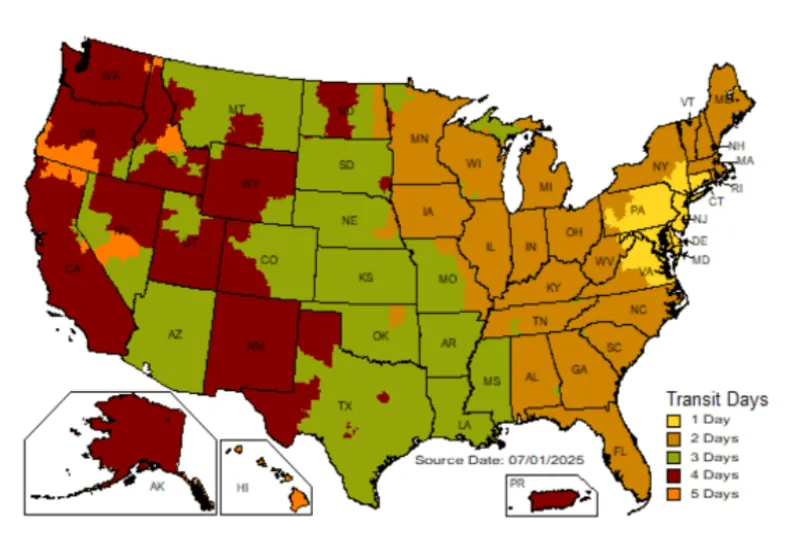
You’re not just wasting money. You’re tanking your CAC:LTV ratio and crippling your ability to scale.
Brands embracing multi-location third-party logistics providers, like Robinson’s Services, known for tailored solutions across an extensive network, reduce these zone-related costs dramatically. They keep stock levels optimized and customers satisfied.
“But Isn’t One Location Easier?” Nope. It’s Dangerous.
This is the most common pushback we hear.
“A single warehouse is easier to manage. It keeps my ops team sane.”
“Sure, until you:”
- Lose a day of shipping due to weather or staffing
- Run out of stock in peak season
- Watch competitors deliver in 2 days while you take 6
Operational simplicity at the cost of competitiveness is not simplicity, it’s slow-motion suicide.
Looking for a New 3PL? Start with this Free RFP Template
Cut weeks off your selection process. Avoid pitfalls. Get the only 3PL RFP checklist built for ecommerce brands, absolutely free.
Get My Free 3PL RFPBrands Need Tailored Solutions, Not One-Size-Fits-All
Third-party logistics services should offer tailored solutions to meet unique business needs. Asset-based or non-asset-based providers offering comprehensive services like freight forwarding, customs clearance, intermodal transport, and cross-docking have a massive advantage. Single-location providers simply can’t compete with these comprehensive solutions.
Even consumer brands like Peloton, Casper, and Glossier have shifted from relying on singular distribution centers to embracing sophisticated logistics expertise across multiple locations, because it’s more effective and ultimately more profitable. As they scaled, they shifted away from single-node fulfillment to multi-location strategies that:
- Decreased zone-related costs
- Improved delivery speed
- Boosted post-purchase satisfaction
- Reduced returns friction
They invested early in supply chain design and reaped long-term loyalty because of it.
The Brand Death Spiral: A 3-Year Lifecycle of Regret
Let’s break this down.
Year 1: You launch. Orders trickle in. A single-location 3PL seems fine. You’re lean, you’re scrappy, and delivery speed isn’t a crisis… yet.
Year 2: You scale. TikTok hits, ad ROAS spikes, and now you’re shipping 1,000+ orders a day, nationwide. Delivery times stretch to 6–8 days for half of your customers. Negative reviews start stacking up. Your product rating goes from 4.2 stars to 3.9 on Amazon.
Year 3: The dip in reviews becomes a conversion problem. Organic sales slow. You’re forced to crank up the advertising wheel and throw discounts at unhappy customers just to keep revenue steady. Now your margins are gone. And worse? Those customers may never come back.
End of Year 3: You scramble. You finally start looking into a multi-node logistics provider like Cahoot, but by now, recovery is uncertain. Rebuilding trust with customers you lost is hard. Winning back ROAS is expensive. You’re bleeding out and hoping it’s not too late.
Bold Prediction: The End of Single-Location 3PLs
By 2027, single-location 3PLs won’t just be outdated, they’ll be absorbed, shut down, or relegated to hyper-local niche markets like hyper-local delivery or bulky item storage. Why? Because the economics just don’t work anymore. Logistics has become a national sport, and the players without reach won’t survive.
In a world with 2-day shipping expectations, AI logistics, labor shortages, and tariff volatility, geography is strategy. And single-location providers can’t compete.
Scale Faster with the World’s First Peer-to-Peer Fulfillment Network
Tap into a nationwide network of high-performance partner warehouses — expand capacity, cut shipping costs, and reach customers 1–2 days faster.
Explore Fulfillment NetworkWhy Cahoot Was Built for This Future
At Cahoot, we saw this coming years ago. We didn’t build a shipping label tool. We built a fulfillment cost optimization platform powered by a nationwide network of high-performing nodes with intelligent orchestration.
What does that mean for you?
- Orders get shipped from the right location
- Return labels are smart, not manual
- Zone math works in your favor
- Fulfillment cost becomes a lever, not a burden
This isn’t just about surviving Q4 or shaving pennies off your shipping rates. It’s about building a logistics backbone that actually grows with your business.
We firmly believe single-location 3PL service providers no longer serve the rapidly evolving needs of ecommerce brands. Our solution is designed for today’s realities, offering extensive network reach across North America, machine learning-driven transportation management and freight brokerage, and cost-effective transportation. We fulfill orders quickly, streamline logistics operations, and reduce overall shipping costs. The result? Improved customer satisfaction, stronger supply chain management, and scalable growth.
Bottom Line: Adapt or Fade Away
So here’s the blunt truth: if you’re still relying on a single-location 3PL, you’re not being conservative. You’re being reckless. You’re betting your future on a fragile supply chain, slower delivery windows, and rising transportation costs in the middle of a macroeconomic hurricane.
This isn’t alarmism. It’s logistics truth.
You don’t need more warehouse space. You need smarter fulfillment. And it starts with a multi-node mindset.
The future is clear: multi-location logistics is the only viable path forward. Embrace this reality now, or watch your competitors speed past you.
Frequently Asked Questions
What exactly is a single-location 3PL provider?
A single-location third-party logistics (3PL) provider operates from only one warehouse facility, handling all inventory management, order fulfillment, and logistics services from that single point, as opposed to multi-location providers who operate several strategically placed warehouses.
Why are shipping zones so critical to fulfillment cost?
Shipping zones directly affect the total cost of delivery: the further the shipment travels from a warehouse, the higher the shipping costs. Single-location 3PL providers often face higher average shipping costs because their warehouses can’t be geographically optimized, whereas multi-location providers reduce costs through shorter delivery distances.
Can single-location logistics services effectively manage reverse logistics?
Generally, no. Reverse logistics is about speed, efficiency, and minimizing transportation costs. Single-location 3PL providers, due to their limited geographic coverage, typically struggle with timely and cost-effective handling of returns, negatively impacting customer satisfaction and operational efficiency.
What advantages do multi-location 3PL providers offer over single-location providers?
Multi-location third-party logistics providers offer reduced shipping times, lower shipping costs, better scalability, enhanced customer satisfaction, advanced technology such as machine learning, and the ability to strategically manage inventory across diverse regions, providing brands a strong competitive edge.
How can a multi-location logistics strategy increase customer satisfaction?
A multi-location strategy ensures faster and more reliable final-mile deliveries by positioning inventory closer to customers. Faster delivery speeds translate to better customer experiences, fewer returns, and stronger brand loyalty, all contributing to higher overall customer satisfaction.
Turn Returns Into New Revenue
